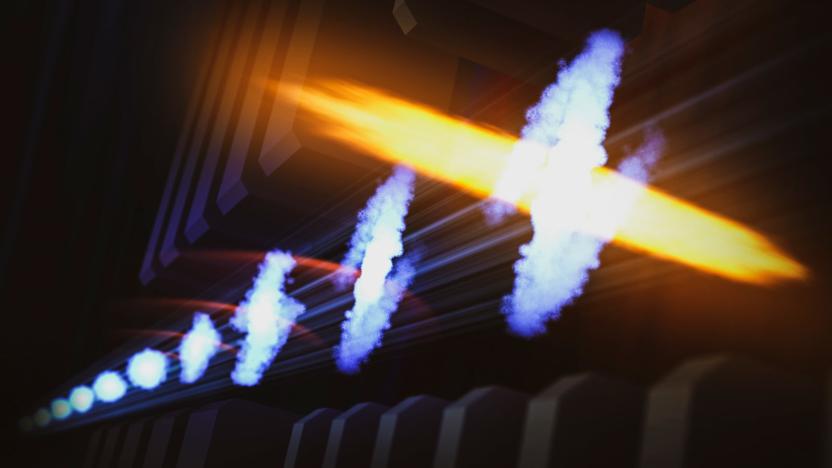x-ray laser
Latest

X-ray lasers can spot elusive electron motion
Scientists can track the movements of an atom's nucleus relatively easily, but electrons have proven elusive -- they move so fast that they tend to be reduced to blurs. Now, however, those movements could be crystal clear. Researchers at the SLAC National Accelerator Lab have developed a technique, X-ray laser-enhanced attosecond pulse generation (XLEAP), that can observe even the fastest motions of electrons. The laser pulses at just 280 attoseconds, or billionths of a billionth of a second, and can create snapshots of electrons to track their progress. The trick was to modify the laser in a way that squeezed electrons into tighter groups, making for shorter X-ray bursts.

Diamond hones DOE X-ray laser howitzer to razor-sharp precision
The US Department of Energy's SLAC accelerator lab already has a pretty useful X-ray laser -- the Linac Coherent Light Source (LCLS). But, recent modifications to the device have scientists drooling over its new found potential. Using a thin wafer of diamond, the Stanford-run lab filtered the beam to a lone frequency, then amplified it in a process called "self-seeding." That's given the world's most powerful X-ray laser even more punch by tossing out unneeded wavelengths which were reducing its intensity. The tweaks allow scientists across many fields to finesse and image matter at the atomic level, giving them more power to study and change it. According to the lab, researchers who came to observe the experiment from other X-ray laser facilities "were grinning from ear to ear" at the possibility of integrating the tech into their own labs. The SLAC team claims they could still add 10 times more punch to the LCLS with further optimization, putting the laser in a class by itself -- X-ray-wise, anyway.

German scientists shoot world's fastest movie: gone in 50 femtoseconds
No, it's not another Fast & Furious sequel, it's something much quicker -- 800 billion times quicker, to be precise. Scientists at DESY (Germany's largest particle physics center) are premiering the Guinness World Record-holding fastest "movie" to a select audience at its light sources users' meeting. The film was shot using an X-ray Laser, and splitting the light in two. By firing one beam off on a minuscule detour (0.015 millimeters) and delaying its arrival by 50 femtoseconds, two separate images are captured. Okay, so two frames isn't exactly Lord of the Rings, but it's still the smallest interval ever recorded. This technique won't be popping up in Hollywood any time soon -- instead, it's actually used for snapping subatomic glimpses of ultra-fast molecular processes and chemical reactions. Despite the brevity of this record-breaking flick, the plot is apparently still more complex than Tokyo Drift.


